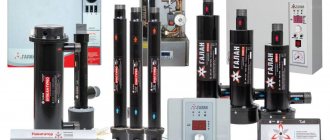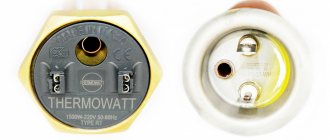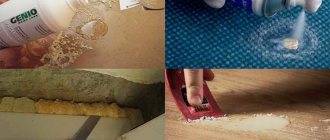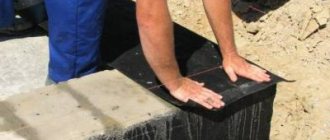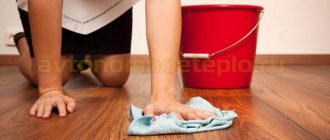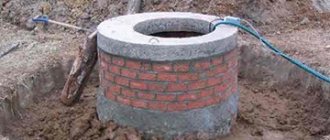Modern water heating devices make human life much easier. But in order to extend the period of perfect operation of boilers, it is necessary to regularly monitor their condition.
Maintenance procedures include cleaning the heating element from limescale. There are many means and methods for removing scale. These include folk recipes and ready-made household chemicals.
How to clean the heating element of a water heater from scale, read the article.
Why clean?
During the process of heating water, some of the salts contained in it precipitate and accumulate on the inner walls of the boiler and the water heating element.
Limescale is characterized by low thermal conductivity, so as it accumulates, the water heating time lengthens.
This fact causes significant inconvenience when using the device. But, unfortunately, this is not the only negative consequence of scale deposits.
Long-term operation of the boiler entails an increase in electricity consumption , and, consequently, money expenditure. In addition, the load on the device itself increases.
If you do not clean the heating element from salt deposits, the risk of equipment breakdown increases significantly. Clogging also affects the quality of hot water consumed. Flake-like inclusions appear in it, which are not always pleasant during hygienic procedures.
To reduce the frequency of cleaning, it is worth installing a filter on the water supply. Softened and purified water extends the life of the boiler.
Simple advice from experts
- You should pay attention to the condition of the ion exchanger - the magnesium anode. It protects the metal container from corrosion. Tap water contains oxygen, which destroys metal. Oxygen interacts more actively with magnesium, destroying the rod. If it is unsuitable, it must be replaced by unscrewing the used rod and then installing a new one.
- A preventive measure to solve the problem of increasing the service life of an electric boiler is water softening. Magnetic and electromagnetic converters cope well with this. An example of such a device is “AquaShield”. Due to the influence of electromagnetic waves, the salt composition of the water changes - this prevents the sediment from fixing.
- A good preventative measure to protect the water heater and other household appliances in the house is to install water filters, preferably coarse and fine filters. Filters will purify water from poorly soluble impurities and remove chlorine.
- When carrying out work on cleaning the boiler yourself, use personal protective equipment - gloves and goggles to protect your skin and eyes from exposure to harmful components, this is especially true for the second cleaning method.
- Another useful tip. To avoid breakdowns, do not purchase models with heating elements made of ferrous and galvanized metals. They resist corrosion less well and heat up poorly.
Knowing how to clean a water heater heating element yourself, without resorting to the services of service centers, you will get real savings of your time and money.
How often?
Experts recommend carrying out preventive cleaning of the heating element once a year . If the device operates under increased load, it is advisable to increase the frequency to twice a year.
In this case, it is always necessary to monitor the operation of the water heater. There are several signs that indicate the need for cleansing.
The time for cleaning has come if:
- water takes longer to heat up than usual;
- power consumption has increased;
- the device makes noise during operation;
- the case and sockets become very hot;
- the water has acquired a yellowish tint;
- a hydrogen sulfide smell appeared in the water;
- the boiler turns on and off.
If a white coating remains on the taps, it means that the water hardness is increased. In this case, the water heater requires more careful maintenance.
Before You Begin: Basic Rules
No matter how clean the water is, it will in any case begin to form scale. Over time, organic deposits and sludge (fine sediment) will still accumulate inside the container.
There are several signs by which you can determine that your water heater needs to be cleaned:
- A noticeable increase in heating time.
- Frequent operation of the thermal protection circuit breaker.
- Sharp pops and noise inside the tank.
- Hot water has an unnatural color and smells unpleasant.
The water in our taps contains a large number of various impurities, lime, manganese and other various chemical elements that make it hard.
Typically the focus is on the heating element. Water containers rarely require special additional care. The result of hard water is the formation of various growths inside the tank.
The result of hard water is the formation of various growths inside the tank.
How to disassemble a boiler?
Before proceeding directly to the cleaning procedure, the device must be disassembled and the water heating element removed from it.
Disassembly work is carried out following a certain algorithm:
- The device is disconnected from the power supply.
- The pipe through which water is supplied is blocked.
- Close the cold flow valve near the boiler.
- Open the hot water tap on the nearby mixer.
- A hose is connected to the drain fitting and the water is released.
- Remove the water heater from the wall and turn it over.
- Unscrew the mounting bolts from the tank pan.
- Remove the panel and take out the thermostat holder.
- Unscrew the screws on the protective door and remove it.
- Disconnect the contacts, freeing the wires.
- Remove the rubber seal.
- Take out the heating element.
To facilitate subsequent assembly of the unit after cleaning, it is recommended to take step-by-step photographs of disassembly.
Flushing
After the heating elements are removed, the boiler itself must be rinsed with clean water to remove all the rust and dirt that has accumulated inside. Therefore, for a quality replacement, the water heater still has to be removed from the wall.
Rinse the insides with an ordinary tap hose. Pour only a little water, since the boiler with a volume of 50-80 liters will still have to be lifted manually to drain all the scraps. Some people add citric acid when washing, others don’t.
How to get the heating element?
The process of removing the heating element must be very careful. This rule is especially important to follow if cleaning has not been carried out for a long time.
Significant accumulated deposits may not allow you to quickly remove the element , and sudden movements can cause damage.
Having taken out the heating block, it is also necessary to inspect the magnesium anode. If the degree of its depletion is close to the maximum, then it is advisable to immediately replace this element with a new one. Otherwise, after some time you will have to repeat the disassembly of the unit.
Replacing the heating element in an Electrolux water heater
The most common malfunction of boilers from this manufacturer is the failure of the electric heater. Moreover, some models are not equipped with a magnesium anode to protect internal steel parts and coating.
Replacing the heating element here is also not difficult; you can use the above dismantling and installation diagram.
How to install a magnesium anode in a water heater? >>>
How to remove lime deposits?
The removed heating element is cleaned in two ways: mechanical and chemical . If the lime deposits are thick, then both methods are used together.
First, large deposits are removed from the tubular part using physical force, and then the remaining limescale marks are removed chemically.
To do this, fill a cylindrical container (for example, an enamel bucket) with cleaning liquid and lower the heating element into it. The exposure time depends on the nature of the reagent.
The boiler tank itself also needs to be cleaned after removing the heating element. The procedure is carried out using a hose - it is inserted into the tank. Turn on the water under pressure and wash away the dirt.
How to remove using folk remedies?
To dissolve the solid salt deposit on the heating element, it is necessary to use substances with an acidic reaction. Used as home cleaners:
Lemon acid . Pour two 25 gram packets of powder into a liter of water. When all the crystals have dissolved, a heating element is lowered into the solution. Leave for a day, after which the heating element is washed in clean water.- Acetic acid .
If a vinegar solution of medium concentration (9%) is used for cleaning, then take 5 tablespoons per liter of water. If only essence is available, then its quantity should be 2 tablespoons for the same volume of water. The holding time is 10-12 hours. - Mechanical cleaning . To remove limestone, use a metal brush, scraper, or sandpaper. The method is labor-intensive and cannot be used to clean the anode.
If there is too much scale, then the amount of reagent can be increased, and the metal container with the solution and heating element can be placed on low heat and heated for 30-60 minutes.
How to remove plaque with household chemicals?
Ready-made liquids sold in household chemical stores are distinguished by a special composition that guarantees the effectiveness of cleansing. Various companies produce such products:
- Boiler-Cleaner . Acid remedy. The liquid is used against carbonate salts and iron oxide. The composition includes a complex of acids, an anti-corrosion additive and substances that enhance the effect of the main reagents. To clean a contaminated surface, the liquid is mixed with water to obtain a concentration of 5 to 12%. The heating element is lowered into the solution and kept for 8 hours. The cost of a 5-liter canister is on average 480 rubles.
- SteelTEX . The formula of the product includes surfactants and corrosion inhibitor additives. The liquid helps remove metal oxides, salts, rust, and biological inclusions from the heating element. According to the instructions for use, SteelTEX is diluted with water in a ratio of 1:6 to 1:10. The stronger the contamination, the stronger the solution should be. After washing, use an alkaline neutralizer. The price of the product (20 kg) is about 4,200 rubles.
- Cillit ZN/I . This reagent from a German manufacturer is designed to combat rust and lime salts. To treat heating elements, prepare a solution of 1 part of the product and 9 parts of water. The part is kept in the solution for 1-4 hours at a temperature of 20 to 40 degrees. If necessary, heating is allowed. The average cost of a 20 kg canister is 10,700 rubles.
Mechanical cleaning methods
The mechanical cleaning method involves removing and disassembling the equipment; to perform the work you will need:
- screwdrivers with flat and Phillips blades;
- pliers;
- a set of wrenches or sockets;
- plumbing wrench for disconnecting pipeline nuts;
- plastic scraper for removing scale.
Cleaning without disassembling the water heater
Mechanical cleaning of internal cavities without disassembly is impossible (regardless of the type of heater). The owner can wipe the external surfaces of the device and pipes, separating salt deposits from the water.
To service internal components, you will need to disassemble the equipment or use liquid chemicals.
For maintenance without disassembly you must:
- Fill the tank to 30-35% and shut off the water supply from the pressure line with the valve.
- Unscrew the nuts and disconnect the liquid supply line, and then install a hose for filling the tank with cleaning solution, raising the opposite end above the top cover of the heater.
- Turn on the power and heat the liquid to the maximum possible temperature (depending on the water heater model, some modifications can heat up to +80...+85°C).
- Pour a cleaning solution (homemade or industrial) into the tank through a funnel inserted into the hose and let it sit for several hours.
- Drain the liquid through the mixer tap into the sewer, replace the pressure lines and rinse the tank 3-5 times with clean water with intermediate heating to +30...40°C.
Disassembling the heater
When cleaning the device with disassembly, you must perform the following steps (using the example of an Ariston brand storage unit):
- Turn off the power and wait for the water inside the tank to cool. Since the process takes 16-20 hours, it is possible to drain the liquid through the mixer taps or a special valve.
- Unscrew the piping nuts and remove the heater from the wall.
- Place the housing with the bottom up on the floor, and then unscrew the screws securing the decorative cover.
- Disconnect the control unit connector and remove the controller with temperature sensor. When removing, be careful not to damage the long sensor (the element passes through the entire tank).
- Unscrew the nuts securing the heating element cover and carefully remove the heater from the mounting socket.
The disassembly algorithm depends on the equipment manufacturer. For example, some companies (for example, Gorenje) use thick-walled metal elements, which increase the weight of the product. Removal from the mounting bar will require the assistance of a second person. When removing the heating element, it is necessary to turn it, disengaging the safety clamps.
If a thick layer of plaque has formed on the surface of the product, the heater can be removed only after preliminary cleaning.
The technician gradually removes deposits with a scraper and pulls the heating element out of the mounting hole.
Removing scale from heating elements
To clean, you need to place the removed element on a tray, and then carefully remove the dirt deposits with a plastic spatula. Since scale adheres tightly to metal surfaces, many owners use a combined removal method. The product is first cleaned of the loose layer mechanically, and the remaining plaque is softened with chemical compounds (for example, citric or acetic acid). After cleaning, the heating element is washed with running water and wiped with a dry cloth.
Some owners remove the heater from the mounting cover and then unscrew the anode electrode from the base. If the equipment has not been cleaned for 2-3 years, the magnesium element wears out greatly and requires replacement. Then the components are placed in a pan filled with a mixture of water and acetic acid (the proportion is determined experimentally). The tip of the heating element with contacts is held above the surface of the liquid (for example, with a wire), the tank is placed on a gas or electric stove to boil for 1-3 hours.
Cleaning the tank
Brief algorithm of actions:
- Remove dirt from the walls of the tank using a plastic scraper. The use of abrasive materials is not allowed.
- Empty the debris and rinse the cavity with water.
- Fill the tank with a cleaning solution (for example, based on citric acid and a special reagent).
- Wait a few hours (if using industrial products, information about cleaning time is indicated on the label), and then drain the liquid.
- Wipe the walls of the tank with a hard sponge, separating the softened scale.
- Inspect the cold water supply fitting and clean the channel (the speed of filling the tank with liquid and the stability of the heater operation depend on the condition of the pipe).
- Rinse the tank with water and perform a visual inspection. If residual deposits are detected, re-rinse with the reagent.
To fully clean the water heater, you need to remove dirt from the walls of the tank.
Elimination of unpleasant odors
To remove unpleasant odors, it is necessary to disinfect the tank with hot water with the addition of citric acid, and then with hypochlorite. Washing is carried out several times until mold is completely eliminated from hidden cavities. The solution is poured into the tank and kept for 20-24 hours. Equipment manufacturers recommend preventive disinfection of storage heaters during operation. To clean, you must set the temperature regulator to the maximum value.
An alternative cleaning method involves the use of the Belizna preparation, which is poured into the heater tank. Then the tank is filled with water, which is heated to a temperature not lower than +70°C. It is necessary to fill the pipelines going to the mixers with the solution and wait 1-2 hours. After draining the reagent, check the quality of the water; if an odor is detected, repeat the procedure 2-3 times. Most users recommend maintaining the operating temperature of the boiler at +60...+70°C, which allows for constant disinfection.
It is impossible to eliminate the cause of the odor by rinsing the tank with cold water or wiping the surfaces with a sponge. Microorganisms and mold remain in hard-to-reach areas and begin to actively multiply after reassembly and commissioning. The situation is aggravated when the water heater is rarely used.
Water heater assembly
Equipment assembly algorithm:
- Replace the rubber gaskets; if tears or deformation are detected, the seals should be replaced. You can get detailed information and select parts at.
- Insert the heater into the mounting hole and tighten the nuts evenly with a wrench.
- Mount the control unit with the temperature sensor, and then connect the electrical wiring harness plug to the connector on the cover.
- Replace the bottom cover and secure with screws.
- Hang the water heater on a standard bracket on the wall and connect the pressure and drain lines. It is recommended to check the condition of the O-rings or install new parts.
- Open the external water supply valve and make sure there are no leaks.
- Connect the equipment to the power supply, set the required temperature and check operation. If any malfunctions are detected, eliminate the causes of the breakdowns.
After installing the boiler, the nuts must be tightened.
How to assemble the tank?
Reassemble the device in the reverse order. To do this, it is important to remember the sequence in which the actions were performed during dismantling. The clean heating element and flange are returned to their place, rubber gaskets are laid, contacts are restored and the protective door is screwed on.
After assembly, you need to fill the tank with water and check the tightness of the device. If water is not leaking anywhere, connect the thermostat, connect the panel and screw in the lid. After this, the water heater is connected to the electrical network.
Tools and materials
You will need the following tools:
- Spanners.
- Flathead and Phillips screwdrivers.
- Phase indicator.
- Pipe wrench.
You will need wrenches.
The following materials are used:
- Gasket for heating element.
- Hose.
- Graphite grease or lithol.
- Tow, plumbing linen or other sealant for threaded pipe connections.
To remove dirt and moisture, you will need a clean rag.
Features for devices from different manufacturers
The general scheme for removing the water heating element may have slight adjustments depending on the brand of the boiler. They are determined by the individual structure of the device and the method of installing the heating element. The following boilers have disassembly features:
- Ariston. To remove the cover with the heating element, you must first insert it inside the housing. If the part does not give in, rock it slightly and try again. The heating element is taken out sideways, as it has a curved shape. On some models, this part needs to be turned counterclockwise.
Gorenja. To remove the front panel on the tank, you need to lightly press its lower edge and pull it towards you.
Once the latches have engaged, the panel is removed. The boilers of this company are heavy, so it is better to lift and turn the device together.- Polaris. Models of this brand are distinguished by the difficulty of removing the heating part. First, the retaining bracket in the device is unscrewed and only after that the heating element is removed. It is taken out at an angle, as if taking it to the side.
- Atlantic and Termex . In water heaters of these brands, first unscrew the nuts located around the circumference of the tank. Then remove the fastening washer. The flange on which the heating element is fixed is lowered down. The heating element is taken out carefully, using loosening movements.
Carrying out preparatory work
Installing a water heater requires determining where it will hang or stand. For rooms with a small area, you can install a small boiler that will hold 50-80 liters of water.
Such tanks are most often hung on the wall. You can choose a water heater with any diameter and design.
If you need to install a container larger than 220 liters, then you cannot hang it on the wall. For such a tank you need to choose a place on the floor.
Video:
When mounting a water heating tank on a wall, it is worth choosing a load-bearing wall so that it can support the weight of the unit.
To secure the tank, you need to have anchor bolts available. In some models they come complete with the tank, sometimes you need to purchase fasteners separately.
For water heaters that are placed vertically and have a volume of 30-100 liters, you will need 2 anchor bolts.
If you need to install a horizontal unit with a volume of 50-100 liters, then you need to have 4 fastening elements.
The place where the boiler will be located must meet the following requirements:
- The water heater must be accessible throughout its entire service life;
- Installing the tank on the wall provides the ability to withstand a load equal to double the weight of the water heater;
- It is worth checking the wiring; it must withstand the operation of the water heater. If the wiring is old, it will need to be replaced;
- It is necessary to check the condition of the pipes in the room, connections must be created to connect the water heater.
Is it possible to clean it at home?
The process of removing scale from the surface of a boiler is not elementary. In this case, skills, tools and great desire are required. If in doubt, contact a specialist. In our article we will look at how to clean a water heater yourself. Despite the fact that models from different brands of water heaters have their own design features, for all devices, cleaning the boiler with your own hands follows the same algorithm.
For work, prepare:
- screwdriver with wrench;
- screwdriver;
- sandpaper;
- gloves;
- cleaning agent.
Choosing a cleaner to remove deposits
Cleaning the water heater will be more effective and without significant time expenditure if you use a special product to restore the surface of the water heater from scale. To do this, visit a household chemicals store and purchase any boiler cleaner.
A concentrated solution of citric acid has a good cleaning effect. To prepare it, take 0.5 kg of the substance and dilute it in 2 liters of water.
Warning! In the instructions for the equipment, look at the contraindications to the use of certain components of the cleaner. Most reagents are not suitable for cleaning rubber sealing parts.
Alumtex
Russian manufacturers also know how to flush a water heater. They released Alumtex. The yellow liquid must be diluted with water in a ratio of 1:10 to thoroughly clean the inner surface of the boiler and heating element from rust, scale, limescale and other harmful deposits. Increases efficiency and overall performance of boilers, prevents premature wear.
SteelTEX
Reagent for neutralizing acidity
Chemical reagents of this brand have earned the love of consumers. The product line consists of flushing solutions for heat exchange equipment, neutralization fluids and accessories. Depending on the material that requires cleaning, you should choose a specific line:
- IRON;
- COOPER.
However, there is also a universal ZINC powder suitable for removing various types of contaminants from most work surfaces. You will also have to purchase neutralizers that will stop the effects of the reagents. When working with acids and alkalis, it is necessary to use acid-resistant gloves and safety glasses, which are also produced by this brand. A set of pH test strips will help determine whether the solution has completely washed off the walls of the boiler or not.
Cillit ZN/I
The reagent is used to remove rust and limestone from boilers, boilers, pipelines and steam generators. Silit is produced in Germany.
When is the best time to contact a specialist?
The design of the boiler is not complicated, but not in all cases it is possible to cope with problems and clean it yourself. Calling a plumber is justified if there is a water leak or the device does not turn on.
A qualified specialist will carry out diagnostics using a special tester without disassembling the water heater. The malfunction of the heating element can only be determined using the device. If a part burns out due to scale, the technician will replace it. Repair of a failed tube is not carried out.
The cause of the malfunction may lie in the temperature sensor. If after the measurements it turns out to be faulty, you will have to purchase a new water heater.
The specialist will also inspect other systems and help identify faults. After repair, the boiler will be cleaned of deposits using mechanical or chemical methods. The choice depends on the customer and the volume of the tank.
Cleaning the boiler from scale means extending its service life and ensuring proper operation of all device control systems. Regular flushing of the water heater will prevent the formation of a dense layer of scale, which reduces efficiency. Experts recommend combining the chemical method with the mechanical method to achieve maximum results. Analysis is carried out once a year, treatment with chemicals every 3-6 months.
A little about the company
It is quite clear that Thermex company declares itself to be the best “in the whole world and Siberia”, that they are already 66 years old, and they work in all Europe and abroad, but there are no mentions among European brands, and even more so among leaders in the production of climate control equipment We could not find it in authoritative sources. The facts are that the company has a plant in Russia and has been operating quite successfully since 1995.
Success in the Russian Federation is ensured, first of all, by the price of manufactured products, and low prices, as is known, very often affect the quality of the final product. But more about the quality below.
Do-it-yourself cleaning of water heaters from odor inside
Many owners of water heaters notice over time that the heated water begins to smell terribly. This unbearable smell may have several reasons:
- Dirty water is supplied to the boiler. If there are a lot of foreign impurities in the water, especially hydrogen sulfide, it emits an unpleasant odor.
- There are specific bacteria and fungi in the tank. Such living creatures are born in the limescale deposits on the walls of the container. As long as there are not many microorganisms, the smell of the water does not change. But over time, their number increases, and the water begins to stink.
- Cheap or damaged water supply. Low-quality tubular plastic transfers its chemical smell to water. And old metal water pipes are ideal for the life of bacteria and fungi.
Water with hydrogen sulfide is impossible to smell
There is a way to determine which of these cases occurs:
- Run cold tap water for 5 minutes. Then place a clean bottle under the stream and close it after filling. After half an hour, you need to open the bottle and check the smell of the water. If it smells bad, there is a problem with the pipes or water.
- If cold water from a bottle smells normal, you need to look for the reason in the boiler itself. To do this, you again need to fill the plastic container, but only from the hot tap closest to the water heater. We wait 30 minutes and smell. If you can’t breathe from the bottle, it means there are harmful microorganisms in the tank.
In order to eliminate the unpleasant odor due to bad water or rusty pipes, you can do the following:
- Install a filter that removes bad-smelling gases from the water.
- Complain to the SES about the poor quality of tap water.
In the first case, you don’t have to wait for someone to come and fix the problem. Therefore, if you can’t stand the smelly water, it’s easier and faster to install a filter.
Problems with microorganisms in the boiler are solved differently:
- Sterilization of the tank. The water in the boiler is brought to a boil and remains in this state for a long time.
- Removing scale from a water heater (see above). This will destroy the favorable environment for the proliferation of microbes and bacteria.
To prevent smelly water from coming out of the boiler again, you need to follow simple preventive measures:
- Do not leave water in the water heater when it is not in use for a long time.
- Periodically descale the tank.
- It is advisable to install a filter.
- Pay attention to water quality. If necessary, contact the sanitary and epidemiological station.


